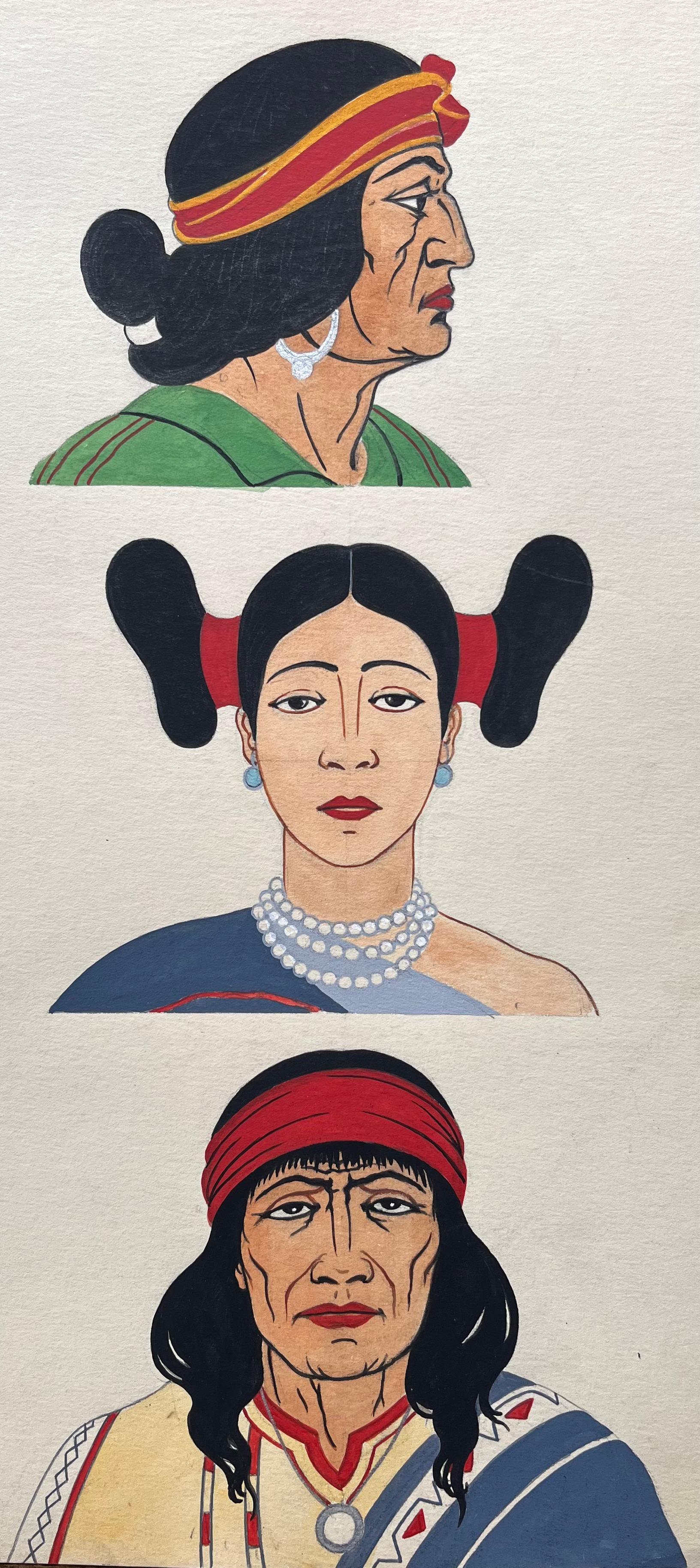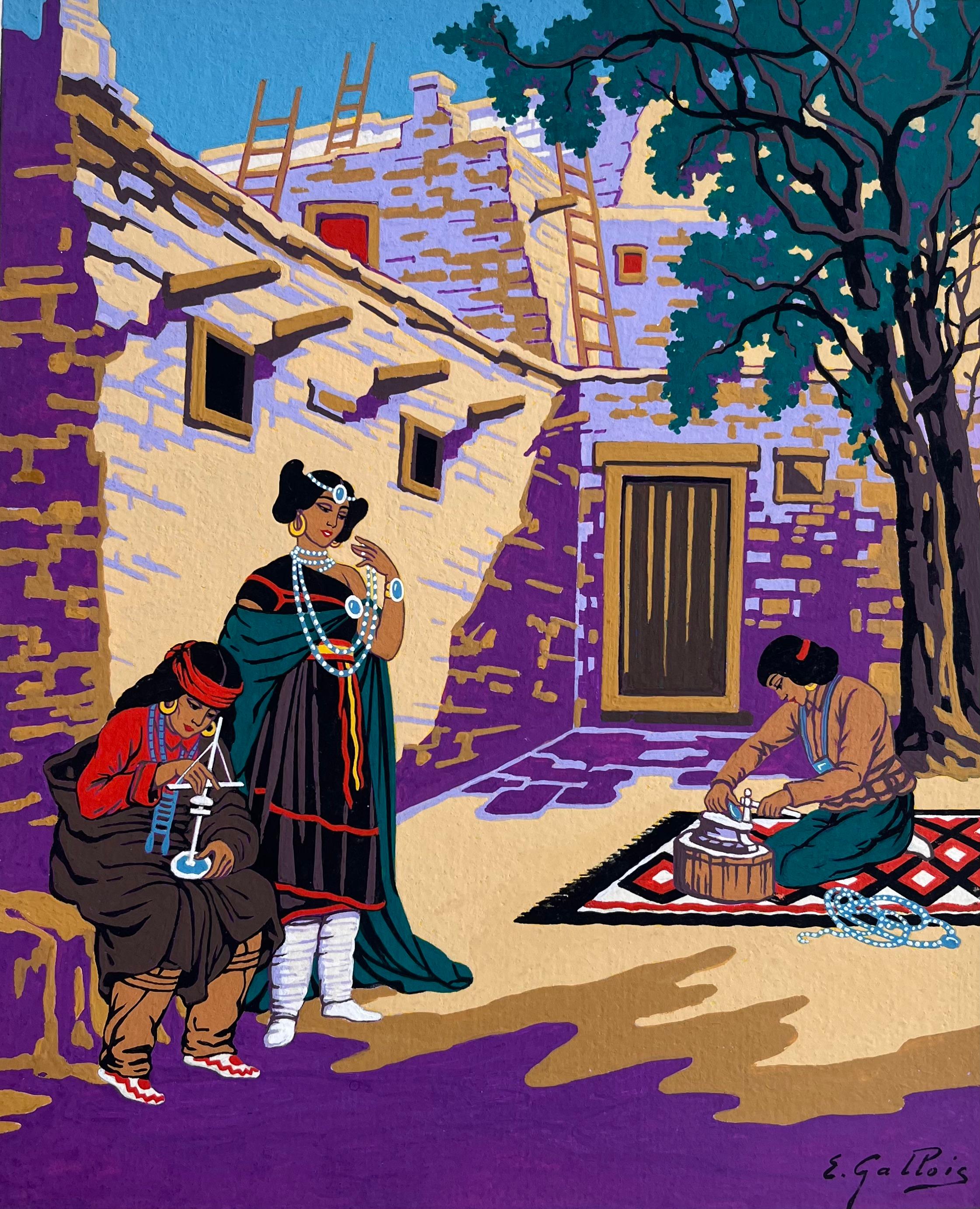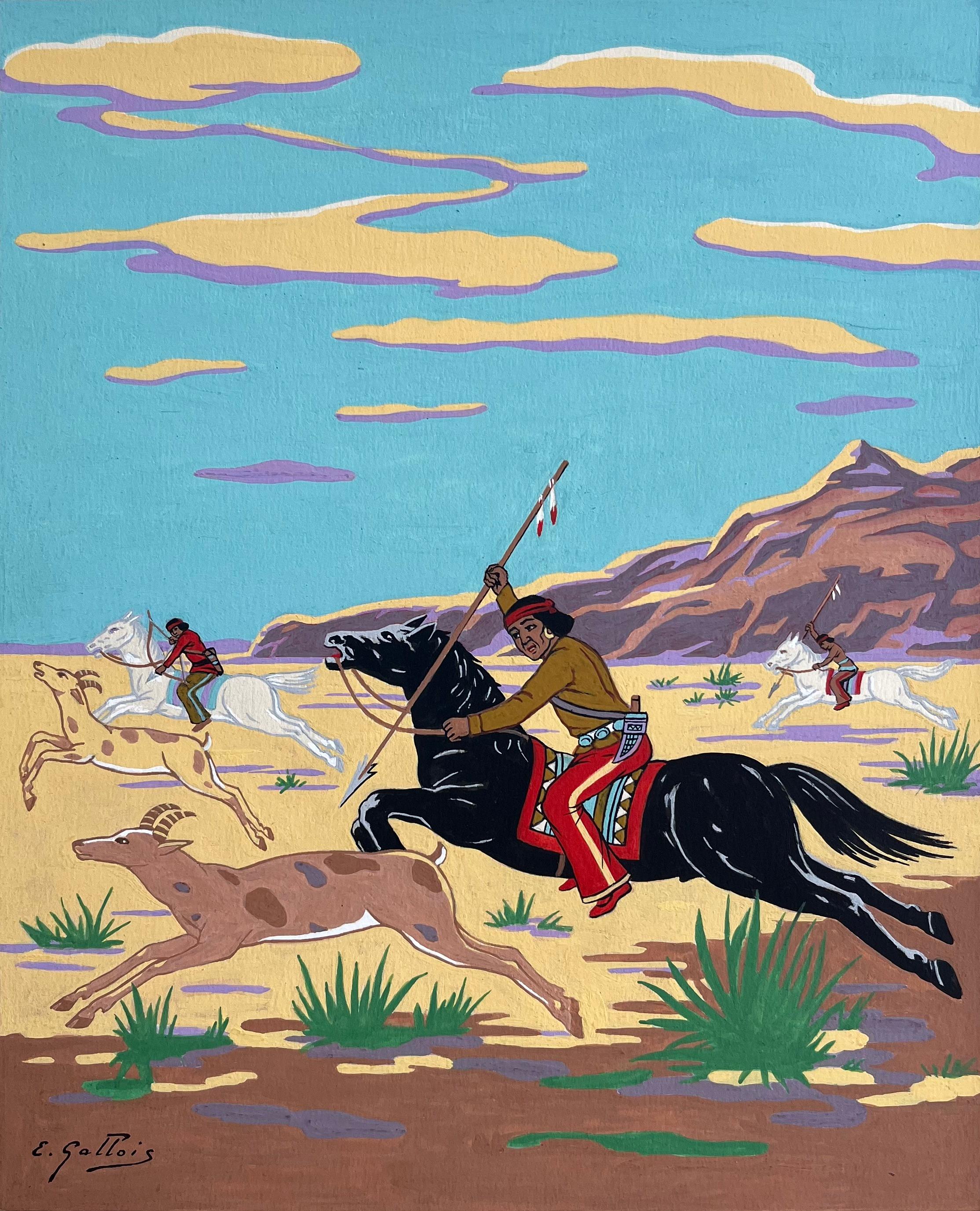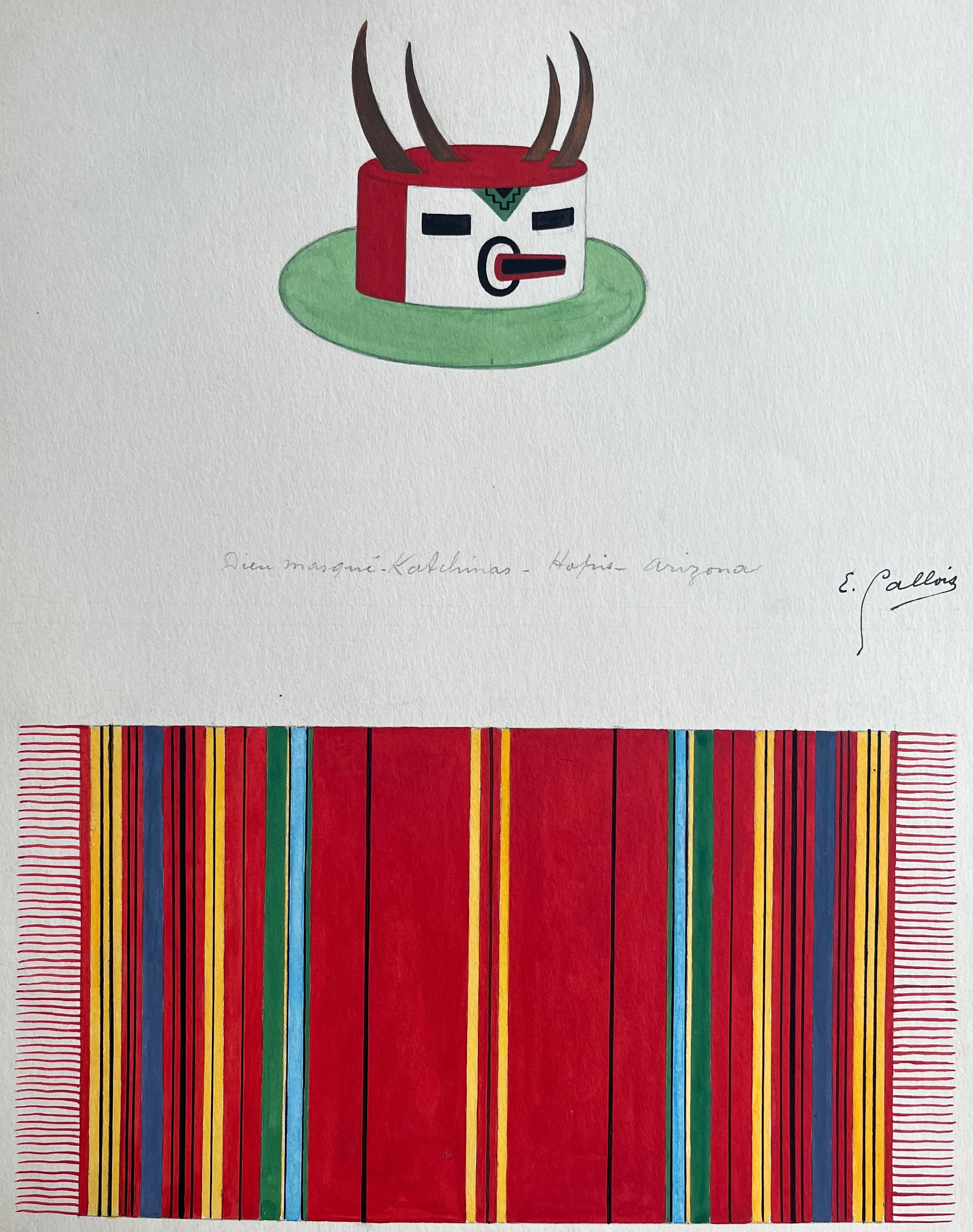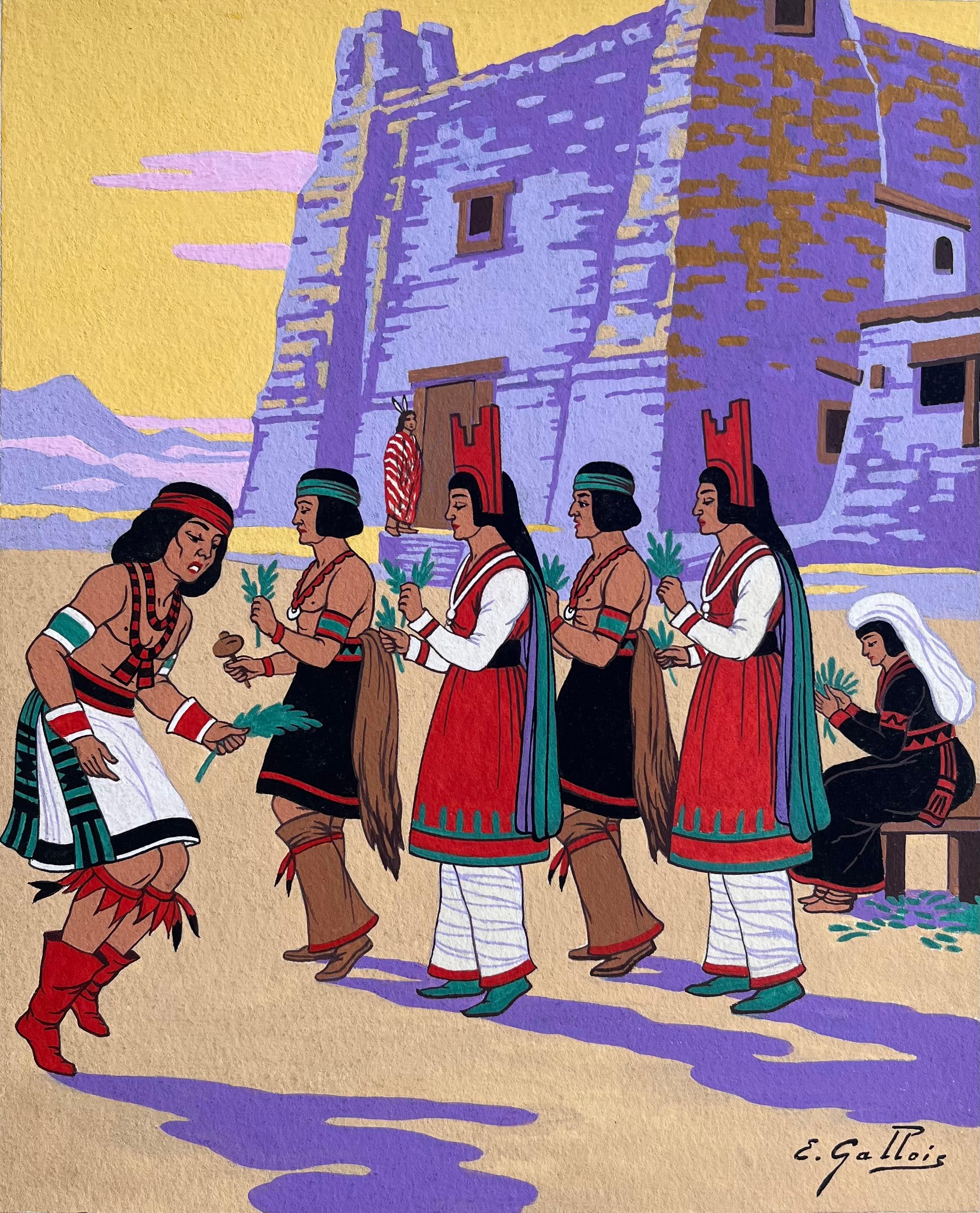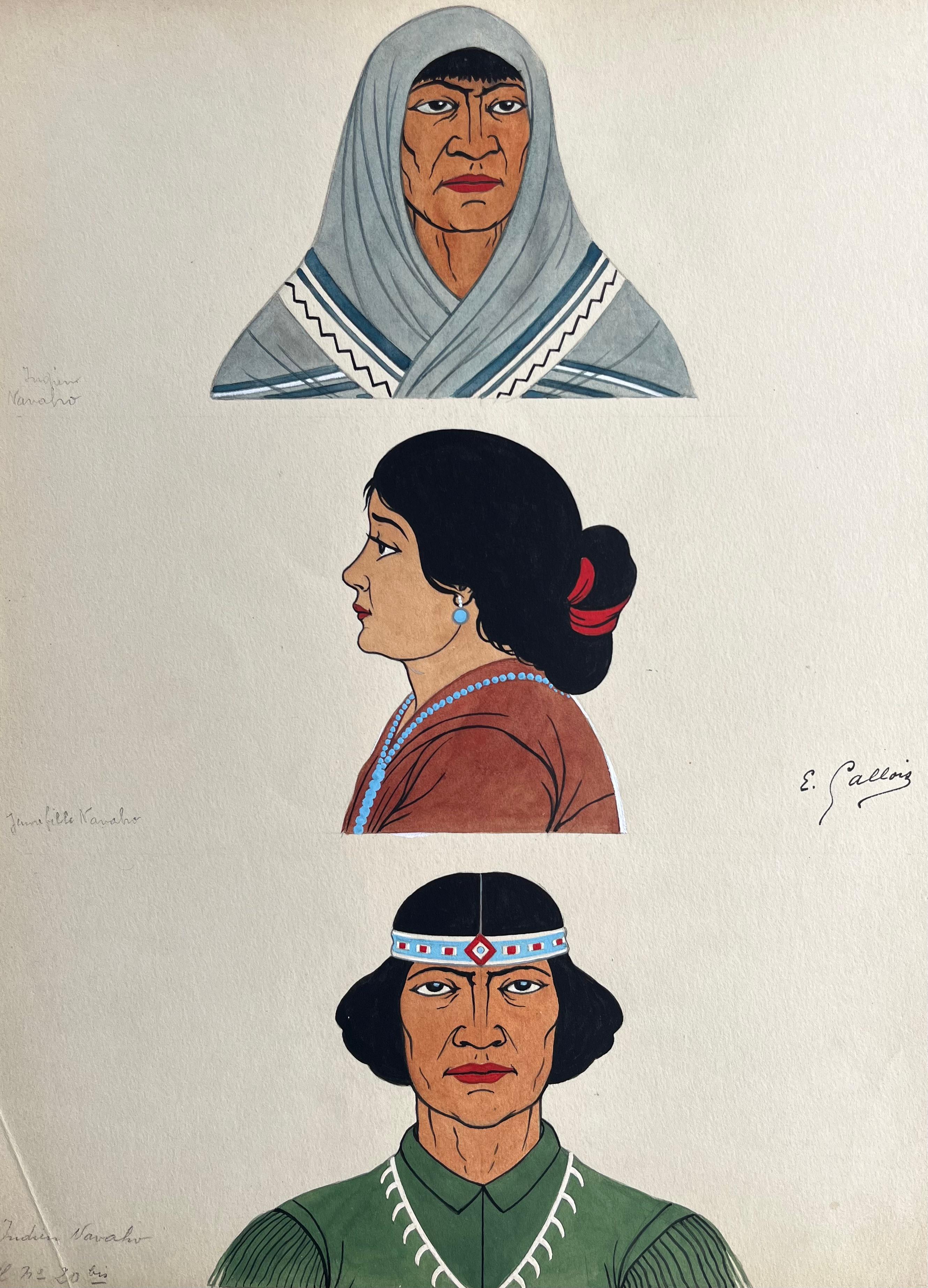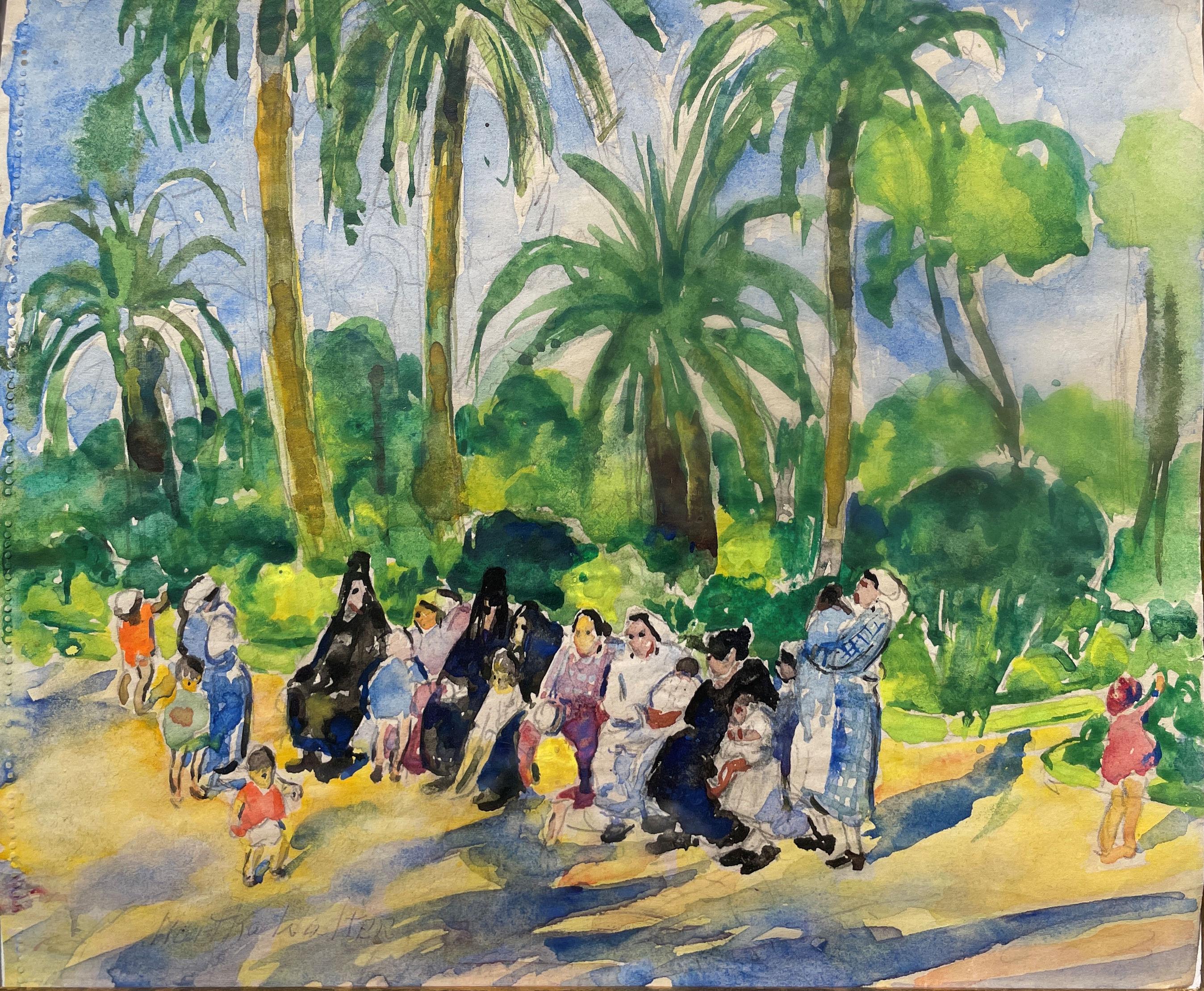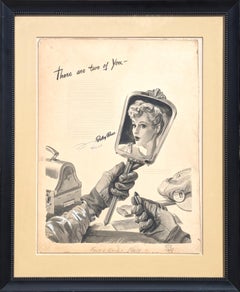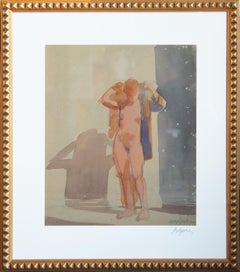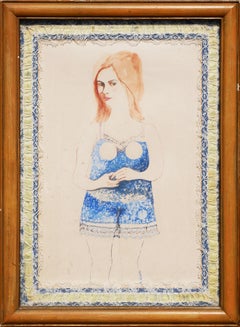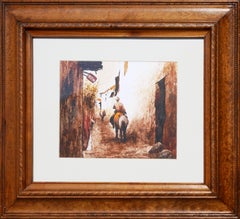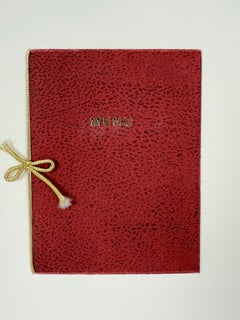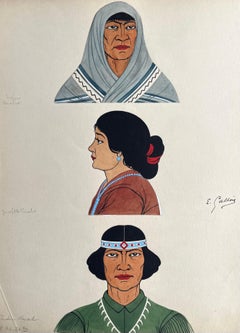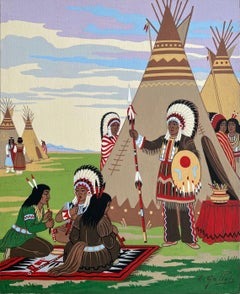Watercolor of a Woman Against Purple Wall
Want more images or videos?
Request additional images or videos from the seller
1 of 6
Luis EadesWatercolor of a Woman Against Purple Wall1956
1956
$1,600List Price
About the Item
- Creator:Luis Eades (1923 - 2014, Spanish)
- Creation Year:1956
- Dimensions:Height: 17.25 in (43.82 cm)Width: 21.25 in (53.98 cm)Depth: 1 in (2.54 cm)
- Medium:
- Movement & Style:
- Period:
- Condition:
- Gallery Location:Houston, TX
- Reference Number:Seller: AL0000.4831stDibs: LU55133865002

About the Seller
5.0
Gold Seller
Premium sellers maintaining a 4.3+ rating and 24-hour response times
Established in 1969
1stDibs seller since 2014
867 sales on 1stDibs
Typical response time: 7 hours
Authenticity Guarantee
In the unlikely event there’s an issue with an item’s authenticity, contact us within 1 year for a full refund. DetailsMoney-Back Guarantee
If your item is not as described, is damaged in transit, or does not arrive, contact us within 7 days for a full refund. Details24-Hour Cancellation
You have a 24-hour grace period in which to reconsider your purchase, with no questions asked.Vetted Professional Sellers
Our world-class sellers must adhere to strict standards for service and quality, maintaining the integrity of our listings.Price-Match Guarantee
If you find that a seller listed the same item for a lower price elsewhere, we’ll match it.Trusted Global Delivery
Our best-in-class carrier network provides specialized shipping options worldwide, including custom delivery.More From This Seller
View All"There are Two of You" Early Modern Original Foley's Ad Layout of Woman & Mirror
Located in Houston, TX
Early modern original watercolor and gouache ad layout for Foley's by Houston portraitist Robert C. Joy. The work features a central reflection of a woman doing her makeup while wear...
Category
Early 20th Century American Modern Figurative Drawings and Watercolors
Materials
Watercolor, Gouache
Abstract Figurative Nude Gouache Painting of Red Haired Female
By William Anzalone
Located in Houston, TX
Colorful figurative drawing by Texas artist William Anzalone. The drawing depicts a nude woman in solitude taking off her robe. Signed by the artist at the bottom right. Framed in a beautiful black modern frame.
Dimensions Without Frame: H 16 in. x W 13 in.
Artist Biography: William Anzalone was born in Brooklyn, New York, in 1935. He was educated at the Massachusetts Institute of Technology (1953-1958) in Boston, earning a B.A., M.A. and the Rotch Prize in architecture. In 1956 he attended Pratt Institute, in Brooklyn, studying architectural design. In 1958 he also attended the Museum School at the Museum of Fine Arts, Boston.
Anzalone married his wife, Louise, in 1956 and they had one daughter, Toni. The Anzalone’s moved from the East Coast to Houston, Texas in 1959. Soon after arriving in Texas, Anzalone began lecturing at the University of Houston, and also began an association with the gallery Meredith Long...
Category
Late 20th Century Modern Figurative Drawings and Watercolors
Materials
Paper, Watercolor
"A Long Time Ago" Modern Figurative Abstract Drawing of a Woman in Blue Lingerie
By Charles Pebworth
Located in Houston, TX
Modern abstract figurative drawing of a woman by Houston, TX artist Charles Pebworth. The work features a central female figure with red hair and dressed in blue lingerie. Signed by ...
Category
1970s Modern Figurative Drawings and Watercolors
Materials
Pen, Watercolor
Brown-Toned Naturalistic Backstreet City Scene Watercolor Landscape
Located in Houston, TX
Neutral tone naturalistic city scene by an unknown artist. The work features a central figure on horseback riding down a village backstreet. The "hostal" street sign overhead indicat...
Category
20th Century Naturalistic Figurative Drawings and Watercolors
Materials
Watercolor
"Boys on Blue Bed I" Light Toned Sensual Homoerotic Figurative Watercolor
By Steve Louis
Located in Houston, TX
Light blue toned homoerotic figurative watercolor painting by contemporary Houston, Texas artist Steve Louis. The work features two nude men stretched out ...
Category
2010s Contemporary Figurative Drawings and Watercolors
Materials
Watercolor, Paper
Niagra Falls Spring and Winter Watercolor Landscapes
By Maude Leach
Located in Houston, TX
Original watercolor landscape painting of Niagra falls in the winter and in the spring. The pair of paintings are signed by the artist in the bottom corne...
Category
20th Century Naturalistic Landscape Drawings and Watercolors
Materials
Watercolor
You May Also Like
"Menu" - "Eat Out More Often" - Intaglio Hand painted Print by Bernadette Emrick
Located in Soquel, CA
"Eat Out More Often" - Menu - Intaglio Hand painted Print by Bernadette Emrick
The artwork "Eat Out More Often - The Perfect Meal - Menu - by Bernadette Emrick (American, 20th C), ...
Category
1980s American Modern Figurative Prints
Materials
Laid Paper, Watercolor, Intaglio
French Gouache Painting of Acoma Pueblo Corn Dance in New Mexico
Located in Cirencester, Gloucestershire
Title: French Gouache Painting of Acoma Pueblo Corn Dance in New Mexico
by Emile GALLOIS (1882-1965, French)
Signed: Yes
Medium: Original gouache painting on thick unframed paper,
Si...
Category
Mid-20th Century American Modern Figurative Drawings and Watercolors
Materials
Gouache
French Gouache Portrait Study of Three Navajo and Kumeyaay Figures
Located in Cirencester, Gloucestershire
Title: French Gouache Portrait Study of Three Navajo and Kumeyaay Figures
by Emile GALLOIS (1882-1965, French)
Signed: Yes
Medium: Original gouache painting on thick unframed paper,
...
Category
Mid-20th Century American Modern Figurative Drawings and Watercolors
Materials
Gouache
French Gouache Painting of Indigenous Council Gathering in Colorado Nevada
Located in Cirencester, Gloucestershire
Title: French Gouache Painting of Indigenous Council Gathering in Colorado Nevada
by Emile GALLOIS (1882-1965, French)
Signed: Yes
Medium: Original gouache painting on thick unframed...
Category
Mid-20th Century American Modern Figurative Drawings and Watercolors
Materials
Gouache
French Gouache Painting of Navajo Weavers in Canyon de Chelly Arizona
Located in Cirencester, Gloucestershire
Title: French Gouache Painting of Navajo Weavers in Canyon de Chelly Arizona
by Emile GALLOIS (1882-1965, French)
Signed: Yes
Medium: Original gouache painting on thick unframed pape...
Category
Mid-20th Century American Modern Figurative Drawings and Watercolors
Materials
Gouache
French Gouache Portrait Study of Navajo Hopi and Apache Figures
Located in Cirencester, Gloucestershire
Title: French Gouache Portrait Study of Navajo Hopi and Apache Figures
by Emile GALLOIS (1882-1965, French)
Signed: Yes
Medium: Original gouache painting on thick unframed paper,
Siz...
Category
Mid-20th Century American Modern Figurative Drawings and Watercolors
Materials
Gouache


